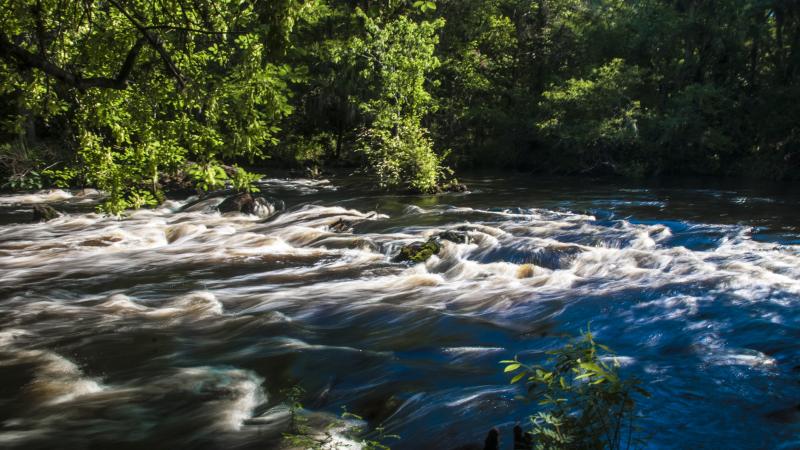Geology in Ravine Gardens State Park

Ravine Gardens State Park contains an intriguing example of how geologic processes create captivating landscapes. The park has steephead ravines with ecosystems that are different from the surrounding uplands.
Steepheads are interesting geologic features found in locations scattered across northern Florida. Rainwater falls on the land surface and slowly infiltrates the sand to create the surficial aquifer system. Steephead ravines develop where surficial aquifer system groundwater seeps out of the ground along a contact between underlying low permeability sediment and overlying unconsolidated sand. As water flows from the seeps, sand is eroded and a steephead ravine begins to develop. Over time, erosion causes the head of the ravine to migrate headward into the higher hills and a larger steephead ravine is formed.
Located in Putnam County, Ravine Gardens State Park is on a landscape feature named Palatka Hill. Palatka Hill is a remnant of a broader, upland feature that was eroded, leaving an isolated hill that has higher elevation than the surrounding St. Johns River Offset Province.
The geologic story of the park begins with the Hawthorn Group, a mix of sand, clay and carbonates (limestone and dolostone) that was deposited between 23 to 12 million years ago during the Miocene Epoch. The Hawthorn Group is overlain by Pliocene and Pleistocene Epoch (5.3 million to 11,700 years ago) sediments. These sediments include the Cypresshead Formation and unnamed shell-bearing units, which contain variable amounts of clay that slows the downward flow of groundwater.
Groundwater flows through the permeable Cypresshead Formation sand until it encounters the lower permeability sediments, where the groundwater flows laterally toward the flanks of the Palatka Hill. Seepage springs form and slowly erode the sands, creating the steephead ravines. Over time, erosion has caused the head of the ravine to migrate into the Palatka Hill, creating the steephead ravines in the park.


